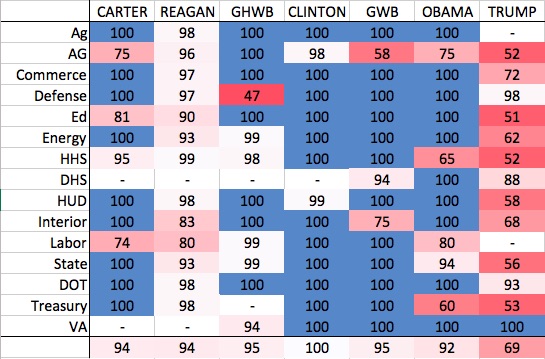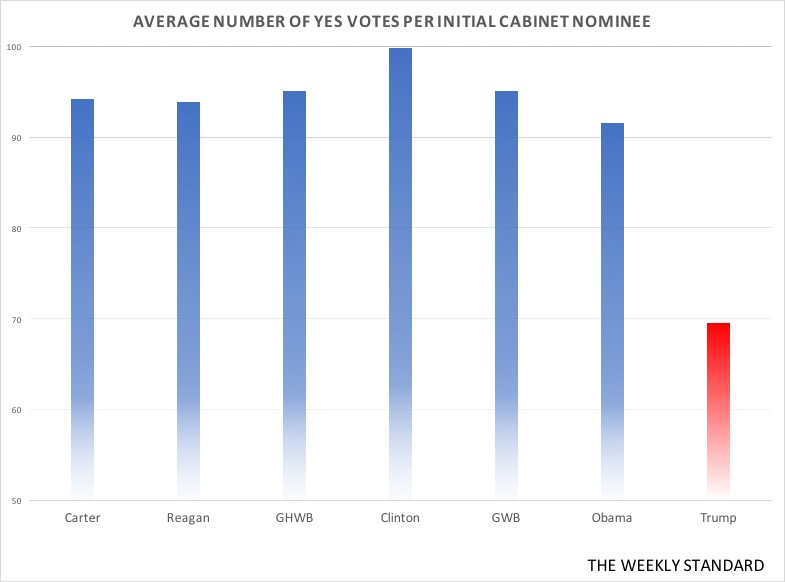With the confirmation of four more of President Trump’s secretary-level appointments this week, the new administration is close to filling all 15 openings that technically comprise the “cabinet”. Only two departments, Agriculture and Labor, still have vacancies.
It’s at this point we can begin to view Senate support for the president’s selections in a historical context. George H.W. Bush retained his predecessor’s top Treasury official, and there were no Homeland Security or Veterans Affairs posts in the Reagan and Carter years. Each of these three presidents had 13 cabinet secretaries of what constitutes the current 15-member arrangement, exactly the same number as Trump has now.
Senate Democrats have made it their mission to stymie the confirmation process for many of his nominees. CNN reported in early January that they were targeting eight appointments, in particular, including Andy Puzder, the Labor hopeful who withdrew his name from consideration more than two weeks ago. No hashtags here—but Democratic efforts to “resist” have been unprecedented, both in their scope and, as you can see, their effect.

At no time in the expanded-cabinet era—the Departments of Education and Energy were Carter-age creations, and Veterans Affairs (1988) and Homeland Security (2002) have come since—have there been so many fights over a new president’s secretary picks. If we group voice votes and 100-0 votes, George H.W. Bush’s seven unanimously approved appointments were unusually low in number. (Five of Reagan’s were unopposed, but a maximum of 99 senators voted on each nomination.)
Only one of Trump’s selections, David Shulkin at VA, has received total support. But it’s not as if his other designees were narrow misses. Bear in mind that Democrats claim 48 Senate seats when considering how consistent and widespread their disapproval of these nominees has been.
Department-by-department, even in posts for which the president has enjoyed particular deference from the Senate, like Commerce and Housing and Urban Development, a majority of Democrats has voted against Trump’s choices. Besides Shulkin, the only cabinet selections to have received more than half of the Democratic caucus’s votes are the well-regarded James Mattis at the Pentagon, John Kelly at DHS, and Elaine Chao—an executive-branch veteran and wife of Senate majority leader Mitch McConnell—at the Transportation Department.
This level of dissent has translated into Trump’s cabinet netting an average of only 69 yes votes per final roll call on their confirmation, which is wildly out-of-step with the traditional level of support most appointments receive.

What is notable is not even the selections of President Obama, for all the famous Republican dissent his administration tracked in, bore such numerous objections from the opposition party. His typical cabinet nominee earned 92 backers, fractionally lower than the norm. Much of that was due to him having two especially controversial picks, at Treasury amid the financial crisis and HHS after former Sen. Tom Daschle dropped out of the running, where most new presidents max out at one, if any.
Today’s Senate Democrats have made a statement: That if the country thinks it’s seen political polarization in its government, it might not have seen anything yet.

